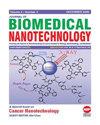丹参酮IIA通过抑制NF-κB和PPARα/ABCA1信号通路缓解动脉粥样硬化
IF 2.9
4区 医学
Q1 Medicine
引用次数: 0
摘要
本研究评估了丹参酮IIA在动脉粥样硬化中的作用及其机制。C57BL小鼠(对照组)和ApoE小鼠(模型组)分别饲喂常规和高脂饲料20周。给其他小鼠高脂饮食加8周Tan IIA,连续20周,然后进行油红O染色和脂质检查,得到Tan IIA组。用PPAR α siRNA+Tan IIA转染RAW264.7细胞,检测其表达情况。结果显示,三组之间的体重变化不大(P <0.05)。模型组和坦IIA组肝脏指数显著升高(P <0.05)。模型组大鼠动脉粥样硬化斑块、斑块横切面积、人氧化低密度脂蛋白(ox-LDL)、低密度脂蛋白胆固醇(LDL-C)和甘油三酯(TG)水平、P- nf - κ B、P- ikk α、P- ikk α / β、TNF- α和IL-1 β水平显著升高,Tan IIA组大鼠IL-1 β水平显著降低(P <0.05)。我们还注意到模型组PPAR α、PGC-1 α和ABCA1水平下降,而Tan IIA组升高。模型组大鼠细胞核内NF- κ B表达升高,细胞质内NF- κ B表达降低,经坦IIA处理后可逆转。Tan IIA可显著降低ox-LDL、LDL-C和TG水平、斑块大小和斑块横截面积。Tan IIA有效抑制NF- κ B,激活PPAR α /ABCA1信号通路,减少炎症通路,从而改善脂质沉积,起到抗动脉粥样硬化的作用。本文章由计算机程序翻译,如有差异,请以英文原文为准。
Tanshinone IIA Alleviates Atherosclerosis Through Inhibition of NF-κB and PPARα/ABCA1 Signaling Pathways
This study evaluated the role and underlying mechanisms of Tanshinone IIA (Tan IIA) in atherosclerosis. C57BL mice (control group) and ApoE mice (model group) were administered a conventional and high-fat diet for 20 weeks. The Tan IIA group was obtained by administering a high-fat diet plus 8 weeks of Tan IIA to other mice for 20 weeks, followed by oil red O staining and lipid examination. RAW264.7 cells were transfected with PPAR α siRNA+Tan IIA to measure their expression. The results showed little change in body weight between the three groups ( P < 0.05). Liver index was significantly increased in the model and Tan IIA groups ( P <0.05). Atherosclerotic plaques, plaque cross-sectional area, human oxidized low-density lipoprotein (ox-LDL), low-density lipoprotein cholesterol (LDL-C) and triglyceride (TG) levels, p-NF- κ B, p-IKK α , P-Ikk α / β , TNF- α and IL-1 β levels were significantly increased in the model group and decreased in the Tan IIA group ( P < 0.05). We also noted a decrease in PPAR α , PGC-1 α and ABCA1 in the model group and an increase in the Tan IIA group. NF- κ B expression was increased in the nucleus and decreased in the cytoplasm in the model group, which was reversed by Tan IIA treatment. Tan IIA significantly reduced ox-LDL, LDL-C and TG levels, plaque size and plaque cross-sectional area in atherosclerosis. Tan IIA effectively inhibited NF- κ B, activated the PPAR α /ABCA1 signalling pathway, and reduce inflammatory pathways, thereby improving lipid deposition and acting as an anti-atherosclerotic agent.
求助全文
通过发布文献求助,成功后即可免费获取论文全文。
去求助
来源期刊
CiteScore
4.30
自引率
17.20%
发文量
145
审稿时长
2.3 months
期刊介绍:
Information not localized

 求助内容:
求助内容: 应助结果提醒方式:
应助结果提醒方式:


